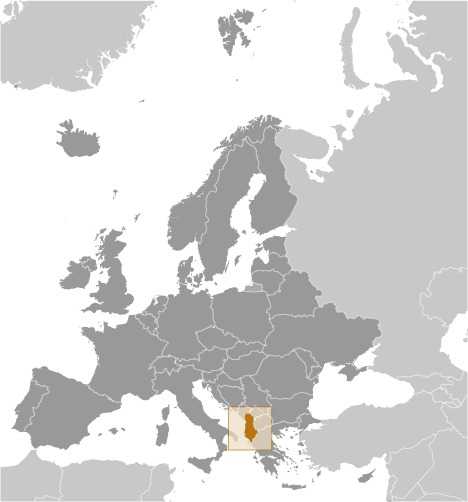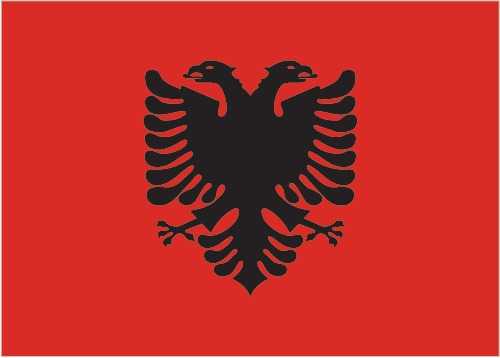Introduction
Background
Albania declared its independence from the Ottoman Empire in 1912, but was conquered by Italy in 1939 and occupied by Germany in 1943. Communist partisans took over the country in 1944, and Albania allied itself first with the USSR (until 1960) and then with China (until 1978). In the early 1990s, Albania established a multiparty democracy. Albania joined NATO in 2009 and became an official candidate for EU membership in 2014.
Geography
Area
total: 28,748 sq km
land: 27,398 sq km
water: 1,350 sq km
Climate
mild temperate; cool, cloudy, wet winters; hot, clear, dry summers; interior is cooler and wetter
Natural resources
petroleum, natural gas, coal, bauxite, chromite, copper, iron ore, nickel, salt, timber, hydropower, arable land
People and Society
Population
total: 3,107,100
male: 1,531,063
female: 1,576,037 (2024 est.)
Ethnic groups
Albanian 82.6%, Greek 0.9%, other 1% (including Vlach, Romani, Macedonian, Montenegrin, and Egyptian), unspecified 15.5% (2011 est.)
Languages
Albanian 98.8% (official - derived from Tosk dialect), Greek 0.5%, other 0.6% (including Macedonian, Romani, Vlach, Turkish, Italian, and Serbo-Croatian), unspecified 0.1% (2011 est.)
Religions
Muslim 56.7%, Roman Catholic 10%, Orthodox 6.8%, atheist 2.5%, Bektashi (a Sufi order) 2.1%, other 5.7%, unspecified 16.2% (2011 est.)
Population growth rate
0.16% (2024 est.)
Government
Government type
parliamentary republic
Capital
name: Tirana (Tirane)
Executive branch
chief of state: President Bajram BEGAJ (since 24 July 2022)
head of government: Prime Minister Edi RAMA (since 10 September 2013); Deputy Prime Minister Arben AHMETAJ (since 18 September 2021)
Legislative branch
description: unicameral Assembly or Kuvendi (140 seats; members directly elected in multi-seat constituencies by open party-list proportional representation vote using the D'Hondt method; members serve 4-year terms)
Economy
Economic overview
future hopeful EU member state; oil and gas exporter but investing toward a “blue economy”; COVID-19 and earthquake economic disruptions and declines; experiencing high debt and account balances; strengthening private sector growth and public sector trust
Real GDP (purchasing power parity)
$43.032 billion (2022 est.)
$41.039 billion (2021 est.)
$37.682 billion (2020 est.)
Real GDP per capita
$15,500 (2022 est.)
$14,600 (2021 est.)
$13,300 (2020 est.)
Agricultural products
milk, maize, tomatoes, potatoes, watermelons, wheat, grapes, olives, cucumbers/gherkins, onions (2022)
Industries
food; footwear, apparel and clothing; lumber, oil, cement, chemicals, mining, basic metals, hydropower
Exports
$7.057 billion (2022 est.)
$5.612 billion (2021 est.)
$3.461 billion (2020 est.)
Exports - partners
Italy 41%, Greece 10%, Spain 7%, Germany 5%, China 4% (2022)
Exports - commodities
garments, footwear, iron alloys, electricity, crude petroleum (2022)
Imports
$9.016 billion (2022 est.)
$8.004 billion (2021 est.)
$5.671 billion (2020 est.)
Imports - partners
Italy 25%, Turkey 14%, Greece 12%, China 10%, Germany 5% (2022)
Imports - commodities
refined petroleum, garments, electricity, cars, raw iron bars (2022)
Exchange rates
leke (ALL) per US dollar -
Exchange rates:
113.042 (2022 est.)
103.52 (2021 est.)
108.65 (2020 est.)
109.851 (2019 est.)
107.989 (2018 est.)
Page last updated: Wednesday, May 22, 2024




